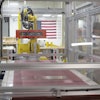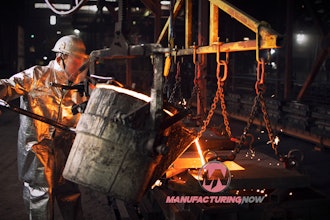Lean maintenance staffs are a fact of life. To ensure continued process optimization and uptime, you can adopt a digital approach to enterprise operations and maintenance based on remotely monitored intelligent field devices. Here's how…
By Eric Fillion
The pressures to reduce costs and increase productivity in process manufacturing industries are unrelenting and are often labeled the top two enterprise-wide priorities for companies today. A seemingly logical consequence of the cost-cutting priority is the on-going practice of trimming operations and maintenance (O&M) staff allocations. Paradoxically, productivity and profitability can suffer when low staff levels lead to insufficient monitoring and maintenance of vital equipment and unplanned shutdowns.
The cost of these shutdowns is magnified substantially today by the reliance on continuous integrated manufacturing processes so efficient that they can replace multiple batch processes. When one of these sub-systems goes down, it can take the whole processing plant with it.
Because the trend toward lean O&M staffing is not going away, something has to take its place to ensure continued process optimization and uptime. That something is a digital approach to enterprise O&M management based on remotely monitored intelligent field devices.
Beyond Control Valves
Over the past decade, manufacturers have made the most headway with digital control valves for two reasons. First, control valves were typically networked via HART or bus-networking protocols, so tying them into a remote monitoring system for predictive maintenance was a relatively simple step. Second, since control devices are among the most critical and expensive field devices, a small incremental cost to remotely monitor their condition and collect predictive maintenance data could be readily justified.
The many process manufacturers who installed these systems are now benefiting from early warning of impending valve failures that would otherwise have resulted in unplanned shutdowns for repairs. They are also realizing substantial cost savings by moving away from scheduled to predictive valve maintenance based on performance factor trend data automatically captured from the valves.
As good as predictive maintenance for control valves was becoming, it had two obvious faults. The approach depends on proprietary systems (hardware, firmware, and software), which had to be purchased from the control valve manufacturer. Also, the monitoring and data collection systems were not applicable to a myriad of other field devices (pumps, flow meters, sensors, analyzers, on-off valves, etc.) that make up the vast population of plant devices requiring maintenance.
New Open Solution
The transition to an all-inclusive field device monitoring and preventive maintenance solution is underway thanks to the new industry standard FDT/DTM technologies. The FDT (Field Device Tool) technology standardizes the communication interface between field devices and software-based monitoring, and data collection systems. The FDT standard allows any device to be accessed via any host through any protocol.
The interface between the management software and the field device is called a DTM (Device Type Manager). It is analogous to the printer and other types of drivers used on personal computers. Almost all field device manufacturers support this technology and make FDTs for their devices readily available to customers and third-party vendors in order to facilitate integrated communications. As a result, process manufacturers can now purchase best-in-class field devices with the complete assurance that they will work in conjunction with any FDT compliant management tool.
Field device management software tools provide such functionality as multi-vendor device operation using either vendor-specific or generic DTMs, network configuration, device navigation via nested communication, DTM catalog management, tracking of user changes, user management, and documentation management. Benefits include significant initial and annual savings, better data interpretation and decision making, rapid troubleshooting, early warning of performance deterioration, efficient planning of scheduled shutdowns, being totally open for access to best-in-class devices, and easy access to information.
Linking to Expert Services
Not only do FDT/DTM technology and field device management systems permit access to all field devices via a common software tool, but they also have the capability of linking the processor directly to expert services that can be brought into play expeditiously in an emergency or at critical points during the annual maintenance cycle.
For example, in one case, an expert services program was created based on life cycle management data to provide the customer with the following:
• Inventory consolidation and factory training of plant staff to reduce costs by assembling a small number of modular valve package components on site.
• Predictive maintenance planning for scheduled shutdowns.
• Tightly budgeted expert assistance for shutdowns.
• Cost-effective software services for field device network configuration.
• Software training in FieldCare System operation and digital valve controller troubleshooting, which translated into an 80 percent inventory reduction.
• Quarterly audit of the system hardware and software performance to ensure system integrity.
• Life cycle management of automated on-off and control valve assets based on an analysis of data collected by the field device management system.
• Best-in-class advisories regarding new developments that can further improve the customer's payback from its predictive maintenance program.
• Co-monitoring of all site networked devices from a secure portal.
This program has paid for itself many times over based on nearly $3 million capital outlay savings due to repair parts and model consolidation and no-cost consigned inventory. An even larger return on assets is anticipated as data-based shutdown planning and predictive maintenance deliver continuous MRO savings while allowing for extended intervals between shutdowns.
Tools for Transition

The diagnostics capabilities and performance features of the ND9000 digital valve controller ensures end product quality under all operating conditions.
FDT/DTM technology and field device management software solve most, but not all, of the problems associated with networking field devices for cost-effective life cycle management. The remaining problems are those involving the interconnectivity of the individual field devices themselves. As these are solved, some field device manufacturers will find themselves able to deliver enormous value to their customers.
A case in point is the countless number of on-off valves that processors and vendors have dismissed as candidates for network monitoring and preventive maintenance. This is no longer true. An advanced on-off valve automation system (such as the Jamesbury Cintac) gives processing plants a wide range of choices for on-off valve automation, communications, networking, and remote data acquisition for condition monitoring and predictive maintenance. None of these require that valve packages be installed on expensive high bandwidth bus networks.
This solution takes the latest on-off valve monitoring/network technology and combines it with a pneumatic control module and state-of-the-art actuator (the Jamesbury VPVL). This one compact, integrated package is totally assembled and requires no external tubing. It is ready for plug-and-play operation. Users can choose from three levels to obtain an integrated actuation system that is right for their immediate needs and can grow to meet future requirements.
The user gets an easy-to-install integrated actuation/communications package out of the box. It's ready for either point-to-point wiring or bus networking. This advanced actuation system also provides a local diagnostics system that incorporates sensors for detecting problems occurring in the valve package and indicating them on a local LED display. Indicators include: insufficient air supply, valve cycling too slowly or stuck, solenoid coil malfunction, and pneumatic valve spool not shifting.
A future release of the system will resolve a problem that has been bothering process manufacturers for at least a decade — finding a way to network on-off valves cost effectively but still having the ability to monitor and manage them with remote software. These packages will be networked and managed via high bandwidth networks such as Foundation Fieldbus. However, if there are many valves, this is a far more expensive option than lower bandwidth options such as AS-Interface or DeviceNet, which do not allow for sophisticated monitoring.
The actuation system has sensors that monitor a broad range of conditions including pressure to actuator, pressure to pneumatic valve, solenoid current use, valve opening and closing time, time lapse between signal and opening movement (dead time), and many more. This communications solution is not limited to the Jamesbury advanced actuation system. StoneL also has a valve communications package that provides the same levels of functionality (although not integrated out of the box) with other vendors' actuators.
Starting Where You Are
With the advent of FDT/DTM technology, process manufacturers' options for monitoring and managing field devices over digital and wireless networks are wide open. Best-in-class devices are no longer to be eliminated because they are not compatible with proprietary networking architectures and management software systems. Users now have a tremendous amount of flexibility in choosing systems and related services that can provide substantial paybacks immediately, along with the ability to migrate into more advanced field device management approaches as they become ready. There is no longer any reason not to apply the predictive maintenance approach to reducing the life cycle costs for field devices of all types.
Eric Fillion is a technical expert from Metso Automation, 44 Bearfoot Rd., Northborough, MA 01532. He is a graduate engineer who has worked in the process manufacturing sector for more than 25 years. More information is available by contacting Metso Automation at 508-852-0200, sending an e-mail to [email protected], or visiting www.metsoautomation.com.


















